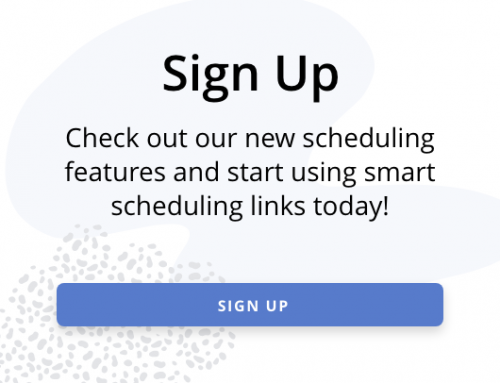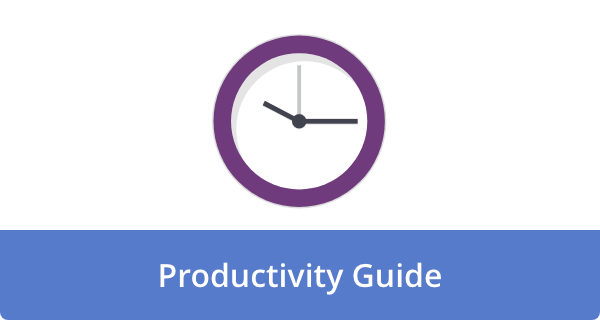

At some point, we’ve all lamented that there’s not enough time in the day. Wouldn’t it be better if that universal complaint weren’t about real time, but about how we perceive the productivity lie?
Ultimately, time is the only constant. It doesn’t slow down or speed up for anyone. Whether we’re scrambling to meet a deadline or taking a moment to relax, time ticks by relentlessly; however, our experience of it can vary greatly. In some cases, hours disappear in a blur of unproductive activity, leaving us stressed and behind. Sometimes, we can accomplish a surprising amount with calm efficiency.
This fundamental shift has nothing to do with adding an extra hour or two to the day. Rather than perpetually battling against time, you need to learn how to work with it instead. With smart strategies and a deep understanding of its nuances, you can significantly boost your productivity, reduce your stress levels, and feel as if you have an extra hour to yourself each day.
Here’s how you can use time as a powerful ally in achieving your goals and feeling more fulfilled, if you’ve ever felt like you were constantly chasing time.
The Illusion of Busyness: Are You Active or Productive?
To begin, let’s consider a common trap that most of us fall into: mistaking sheer activity for genuine progress.
Our modern hustle culture glorifies “busyness.” Many people take pride in their packed calendars, a constant stream of notifications, and the ability to juggle multiple tasks simultaneously. As they check emails, attend back-to-back meetings, and bounce between demands, they genuinely believe they are incredibly productive.
However, much of this frantic “busyness” is essentially reactive. After all, when you respond to external stimuli, put out fires, or respond to others’ demands, you’re not driving your day. When you operate in this manner, you are exhausted and rarely make meaningful progress toward your most important goals. Essentially, it’s like being stuck on a hamster wheel: there’s constant movement, but no progress.
Another way to put it’s that it’s not about doing more, but about doing the right things with an intention and purpose that truly matters. To be productive, an individual must complete several tasks that are meaningful and aligned with their goals.
Align Your Time With What Truly Matters: Bridging the Gap
A powerful and often overlooked way of reclaiming your time is by aligning your priorities and values with your time expenditures.
Try this powerful exercise for self-reflection;
- What are the top 3-5 things that matter most to you right now? Be honest with yourself. It’s not about what you should value, but what genuinely drives you. It could be a growing business, deepening relationships with family and friends, prioritizing your health or well-being, mastering a new skill, helping a cause, or finding greater creative expression.
Now that you have that list firmly in mind, let’s examine how you spend your time each week. Here, we must be brutally honest with ourselves.
In most cases, you’ll discover a significant disconnect. Although you claim health is a top priority, you haven’t run in weeks or cooked a healthy meal. Even though you say family is the most important thing to you, you’re constantly working late, missing bedtime stories, or staring at your phone in the middle of a meal.
The misalignment between your stated values and your actual time allocation is your golden opportunity. If you genuinely want to make time for yourself, then consciously use it according to your deepest intentions, not just your endless obligations. When you realign your schedule, you have complete control.
Use the Power of Time Multipliers: Invest Now, Gain Later
Whenever you want to “create” more time, time multipliers are the closest thing you can find. These are actions or systems that, while often requiring a slight investment of time or effort up front, ultimately free up exponentially more time for you in the future. Consider them high-leverage activities.
The more time multipliers you implement, the less friction you’ll have in the future, and the more time you’ll have to spend thinking.
Here are some powerful time multipliers to consider;
Batching similar tasks.
Try grouping similar tasks together instead of tackling emails sporadically throughout the day, switching to report writing, taking a call, and then returning to emails. Schedule specific times for answering emails, making phone calls, and managing administrative tasks. The result of batching is a reduction of mental switching costs, a boost in concentration, and an increase in efficiency. When you keep your brain in one mode, it functions more effectively.
Automating repetitive routines.
Is there a task you perform repeatedly that doesn’t require any thought? Consider setting up autobilling for services, creating recurring reminders, organizing incoming emails, or scheduling social media posts. By automating these tedious tasks, you can save time and energy.
Strategic delegation.
For many, this is the most powerful time multiplier. Think carefully about every task you are going to do. If the answer is no, consider outsourcing or delegating it. We’re not talking about offloading unpleasant tasks; we’re talking about leveraging your unique skills and impact where they’re most needed. For example, you might delegate tasks at work, hire a virtual assistant, or pay for services such as grocery delivery or house cleaning.
Creating templates.
Do you find yourself writing the same calendar, emails, proposals, meeting agendas, or project outlines over and over again? Rather than starting from scratch every time, create a template once and reuse it. Over time, this upfront effort can save hours, ensuring consistency and accelerating repetitive communication and documentation.
Setting boundaries.
This isn’t a tool, but a mindset that can multiply your time. By saying “yes” to an external request, you are saying “no” to something you might find more important. A simple “no” to a low-priority request, an unnecessary meeting, or an overwhelming commitment can save you hours of future regret, stress, and obligations. As a result, you’re free to focus on what really matters.
With these multipliers, you can plug those leaks in your schedule where time is currently slipping away and reinvest that time with purpose.
Redesign Your Day (Not Just Your To-Do List): Beyond the Checkbox
To-do lists are meticulously crafted by most people, outlining what they intend to accomplish. However, it’s rare for people to plan out how they will approach their day and when they will accomplish those tasks. When you inevitably fall behind or are interrupted by unforeseen circumstances, a simple, linear to-do list can make you feel like a failure.
Instead of following a rigid checklist, design your day around those intentions.
- Focus blocks (deep work). Writers, strategic planners, complex problem-solvers, coders, and designers use these periods to concentrate 100% on their work. It’s also essential to minimize distractions during these blocks.
- Admin blocks (shallow work). Answer emails, schedule appointments, organize files, make quick calls, or do light research here. As a result, you will have more time for high-value tasks.
- Recovery blocks (recharge & reset). The most important thing is to schedule time for activities that will help you recharge and reset. Exercise, a walk outside, dedicated meal times away from your screen, meditation, or simply unstructured downtime may contribute to this. For sustained productivity and preventing burnout, these are essentials.
Additionally, you can include buffer time between meetings or complex tasks. With this short amount of time (5-10 minutes), you can transition mentally, get a drink, take notes on the previous task, or prepare for the next without feeling mentally fatigued.
A good time design creates flow, not excessive control. To be more effective and less stressful, you need to consciously plan your day so your energy levels match the demands of your tasks.
Make Time Visible: The Clarity of the Audit
When you cannot see or measure something, it is tough to improve it. Even though we think we know how we spend our time, tracking it can reveal startling differences.
This is why tracking your time can be incredibly eye-opening, even for a short time period. There’s no need for fancy software or minute-by-minute logs. You can use a notebook or a simple spreadsheet to keep track of everything. Just jot down your activities every 30-60 minutes for two or three typical workdays. Even with distractions, be honest.
You will quickly discover powerful patterns in your log as you review it.
- Your peak hours. In this exercise, you’ll identify when you are naturally most alert, focused, and energetic. During this time, you should focus on deep work.
- Actual task duration. In this way, you’ll be able to identify which tasks consistently take longer than you expected (the “planning fallacy” is real!). By doing this, you will be able to make more realistic estimates in the future.
- Hidden distractions. These time-wasters show up more often than you think. They include excessive social media browsing, lengthy coffee breaks, and unplanned conversations.
When you gain clarity, it becomes easier to adjust your schedule to suit your natural rhythms, rather than constantly fighting against them. If you plan strategically, you can schedule your most demanding tasks during peak hours and save lighter work for times when you’re feeling low on energy. Aligning yourself in this way is the cornerstone of effortless productivity.
FAQs
What if I feel overwhelmed even when I plan?
Often, overwhelm is caused by overcommitting. When your calendar is crammed to the brim, there’s no room for the unexpected-or for rest. Don’t forget to schedule white space into your day. It’s not laziness; it’s a buffer against the realities of life.
Furthermore, limit yourself to 1–2 high-priority tasks each day. In most cases, that’s more than enough.
How do I stay focused when I work from home?
Get into work mode with a routine. This could involve dressing for the day, taking a short walk, or setting up a dedicated workspace. To stay mentally fresh, use tools like the Pomodoro Technique (25 minutes of focused work followed by five minutes of breaks). The most important thing is to communicate boundaries with your housemates or family members.
What’s the best way to stop procrastinating?
Whenever possible, break tasks into smaller steps. Instead of writing a report, just open the document and start writing. It all comes down to momentum.
As a bonus, try doing your most dreaded task first (the “Eat That Frog” method). By doing so, you can free up some mental bandwidth for the remainder of the day.
I keep making to-do lists but still fall behind. Why?
Time is often overlooked when making to-do lists. As such, try turning your list into a calendar. To ensure your day is realistically planned, assign each task a specific time slot.
Also, ask yourself: Do I need to do this — or can it be deleted, delegated, or deferred?
Can I really “gain” more time without giving up sleep or fun?
Yes, by utilizing time more efficiently. By eliminating time-wasters (such as constant scrolling, checking email multiple times, and multitasking), you can save hours each week. You don’t need to work harder either. It’s simply a matter of making more conscious choices.
Image Credit: Photo by Sóc Năng Động; Pexels











John Hall
John Hall is the co-founder of Calendar a scheduling and time management app. He’s also a keynote speaker that you can book at http://www.johnhallspeaking.com.